The TL;DR* of this article
*Too Long, Didn't Read
- Beginner
- Intermediate
- Advanced
The secrets to Roger Federer's success lies in his ability to focus on what's important.
The Man, the Brand
Federer represents some big brands, but he's also a brand in and of himself.Play the Ball
Connect with the ball (consumer) as effectively as you can.Keep Things in Perspective
Champions and successful businesses alike don't sweat the small stuff.Adapt and Change
Federer improved his backhand form—a major weakness against tough opponents—and has come back from a knee injury better than ever.
I’m a total tennis junkie. I love the sport, the players, the strategy, the skill that goes into it, and everything else about it. Case in point: My brother and I wage tennis war four times per year in San Diego, Salt Lake City, St. George, and Las Vegas. No money is on the line. Just four dinky (but meaningful) trophies, and all the bragging rights for the year. It’s our personal Grand Slam of sorts.
But if there’s one thing that I love about tennis more than anything else, it’s watching Roger Federer play.
I’m a true addict, and it’s the FedExpress that keeps me coming back. I love Rafael Nadal too (or Rafa, as we call him in the tennis world), but I’m a complete fanatic for Federer and his game. He’s the main reason I make the journey to New York for the U.S. Open and pay thousands of dollars for front row seats—I just want to get a small glimpse of his greatness and imagine how I could move my feet so gracefully.
Federer isn’t just a great player and possibly the greatest player ever. He’s also a brand in and of himself. His brand represents quality. It’s excellence. And he’s a perfect example of what all this looks like when wrapped up into one of the most extraordinary players to ever step foot on the court.
Even if you’re not as crazy about tennis as I am, it’s hard not to appreciate his story and how he’s built a tribe of fanatics like me around him. In his own way, he’s mastered customer experience (CX), and that’s why I’m writing this article today.
In a nutshell, there’s a lot that corporate America can learn from looking at the way Roger Federer carries his brand, maintains a high level of sustainable success, and has reinvented his game in the twilight of his career.
Roger Federer: The Man, the Brand
Federer is one of the all-time greats in the tennis world, if not the sports world. He won a gold medal at the 2008 Olympics in Men’s doubles, and a silver medal at the 2012 Olympics for Men’s singles. He won three Grand Slams in 2004, 2006, and 2007—an achievement no one has yet matched. He has dominated at Wimbledon with five consecutive titles. He has a host of other accomplishments, but it’s safe to say his continued success on the court is why so many tennis lovers (including me) call him the best player in history.
Besides the titles and other competitive wins, another reliable way to gauge the relative success of an athlete is to look at their sponsors. Federer represents brands that send around $65 million his way every year.
For some athletes, these partnerships with brands can seem far-fetched or forced. But in Federer’s case, many of his sponsors also come from Switzerland, including Credit Suisse, Lindt, Jura, Sunrise, and more. Sponsors likeWilson will always be interested in those dominating the tennis world, but some of the companies simply match up with the grace and sophistication that Federer plays the game with—Rolex, Mercedes-Benz, Moet & Chandon. He’s become the perfect ambassador for companies that want to exude and personify quality.
Some of these relationships with his sponsors go back over a decade, and it’s easy to see why. He’s done a lot of winning throughout his career, and he continues to win despite being considered old in the world of tennis. Federer shares his age (37) with just one other player in the men’s top 50. Still, he remains on the court despite experiencing devastating losses and injuries, only to come back and prove wrong every analyst who said he was on his way out.
But the analysts were right about one thing: he’s not the same player he once was. He’s transformed.
Federer has an incredible amount of natural talent, but that’s not what has made him a legend (though it’s certainly helped). He’s learned to make adjustments based on his current circumstances, and adapt. He improves with every set, every serve, every stroke.
Key Transformations of Roger Federer
Federer wasn’t always a player who was so composed. When he first started out, he lost his temper—a lot. He will tell you the same thing, and has even referred to his past self as a “hot head.” Andy Roddick had a fantastic interview with Federer. One of the questions he asked was about what he regrets. His answer:
“I wish I would’ve realized my potential two years earlier, started to work really hard earlier, understand what I was trying to achieve, what was possible, earlier. But at the same time, all of that was good for me later on. I got all of the stuff out earlier. The anger. The sadness. The pressure. I had to deal with so much between 16 and 22 that later on made me the player I am today.” – Roger Federer
Here’s the interview. It’s worth a watch.
You can see from that interview that he’s very composed. Now, he very rarely loses his temper on and off the court. He’s learned to live in the moment.
Federer’s career peaked early on. From 2001 to 2019, he won Wimbledon eight times, five U.S. Opens (all in a row), six Australian Opens and one French Open. But in the six years following his victory in the Australian Open final in 2010, he won only a single major. For someone who had spent years atop the tennis world, it had seemed like a clear sign of decline. And when Federer sustained a knee injury that required surgery in 2016 followed by six months away from competition, it was considered by many to be the end of a legendary career.
But he surprised everyone when he came back, and if you believe him, even himself. In 2017, he’s won the Australian Open, became Wimbledon’s oldest champion (in the Open Era, which began in 1968), and helped Team Europe win the Laver Cup by defeating the 22-year-old Australian phenom, Nick Kyrgios. Experts are saying that, against all odds of his age, he’s possibly playing the best tennis of his life.
In an interview following Wimbledon 2017, he was asked about the possibility of winning three slams by the end of the year. His answer was, “That would be a joke. I am not 25 anymore.” But he then went on to say, “I’ll definitely try and get myself organized, prepared and ready so that I’ll have the best chance to do well at the US Open.”
Keep in mind that this is coming from a guy who doesn’t have anything left to prove, that he’s among the best tennis players in history, yet he continues to work hard to improve. He adapts to every new tournament: game, set, and match. He sets out to reinvigorate his game and continue to win as long as he can.
So what is it, exactly, that corporate America can learn from Roger Federer? Let’s dive in.
1. Play the Customer Experience Ball
In a recent interview, he revealed the strategy that he had planned with his coaches while preparing for the Australian Open:
“Play the ball, not the opponent […] Be free in your head, be free in your shots…”
This may sound like the sort of thing even a grade-school soccer coach would say, but there’s some important psychology at work here. You lose sight of your own game when you’re thinking about who you’re playing, how many times you’ve lost to them in the past, what the beat writers will say if you lose, and anything else that could be going through an anxious mind.
Federer has hit a tennis ball thousands, if not millions of times. But so have his competitors. What does “play the ball” mean when the sport boils down to hitting the ball over a net inside the lines?
Check out this mesmerizing slow-motion video and see if you notice anything unique about the way Federer hits the ball.
Do you see it? He’s focused on where the racquet connects with the ball. He lingers on that momentary connection. When he says he’s “playing the ball,” he really means it.
There are countless videos and articles dedicated to Federer’s footwork, shot form, and more, but I think the breakdown of his vision technique is incredibly interesting. He is so laser-focused on his goal that you’re unlikely to find a picture of him looking away from the ball as he hits it. What he’s doing here is the sports equivalent of customer experience management.
Businesses can learn from his example by playing the ball, which is the entire end-to-end customer journey. When you hit the ball, it doesn’t matter if you put topspin on it or underspin. All that matters is that you have a clear goal in mind. You’ll have some missed shots here and there, but just stay focused on that connection, keep practicing, and be particular about what that entire end-to-end experience looks like.
Your eye has to be on the customer’s experience consistently. You can’t simultaneously provide excellent service and ignore that momentary connection. You provide exceptional customer experience by observing the ball (the customer) and deciding how you’ll handle your next hit.
This doesn’t mean that you should ignore your competition. It’s important to know and understand what tactics your opponents are likely to use. You need to prepare for their return volley. Still, this shouldn’t affect how you hit the ball. It shouldn’t cause you to change your course so wildly that you take your eye off the customer and keep your focus on the competition.
What matters is the relationship you’re building with your clients, just like Federer consistently develops his relationship with the ball. This development is how he’s won a record-setting 19 grand slams and how he’s reinvented himself as a player before winning two more as the oldest player on the tour. Talk about a brand! And it’s all because he’s kept his focus on the ball.
2. Keep Things in Perspective
Since his return from knee surgery in 2016, Federer has beaten Rafa four straight times. Four times! Up until that point, Nadal held a commanding 24-11 lead in their head-to-head matchups.
So, how did he manage to come back and win? He learned to relax.
I’m not talking about resting. Everyone does that. I mean that he loosened up and changed his perspective. So how does someone who’s been at or near the top of the tennis world for the last 20 years pull that off?
When companies get into the mindset of a champion like Roger Federer is when reinvention can kick in. One of the most crushing losses Federer faced was against Rafa in the 2008 Wimbledon finals. A year later, a BBC reporter asked him how long it took to get over that loss. His answer: “About two hours.”
Now, that’s not a slight to Rafa, nor is it a not-so-humble brag. It’s his approach to moving forward, living in the now, and proof of his focus on onward and upward momentum.
In an interview, Federer shared this insight:
“I have more perspective. You absorb losses faster and easier, even though it hurts. You move on with it, you know you were well prepared, you know you tried your best. Rather than wasting negative energy on something you can’t change anyway, you take it on the chin, you learn from it and move on.” – Roger Federer
Every business goes through moments like this, which I call strategic inflection points. These are the moments where fundamental shifts must be made in order to maintain forward motion and continue on the path of growth. In the case of Roger Federer, these happen after losing to another tennis player. For a company, this is when revenue flatlines or falls. In either case, keeping perspective and going back to the basics is crucial. Why are you still in the game? What do you want to accomplish? If your company is five years old, what will you be doing for the next five years? If your company is 100 years old, what adjustments will you make to stay relevant?
3. Adapt and Adjust
Federer has already proven that he’s a legend, yet he still takes an opportunity after every loss or injury to adapt and improve. It’s through this constant reinvention of himself and his approach to the game that he’s continued to grow—and that all has to do with his own personal WHY.
So why choose to adapt in the first place? Why not just stick with the routine you have, which worked pretty well in the past? The answer is the same in sports and business, in many ways.
The competition is always nipping at your heels. Younger, quicker, talented upstarts who want to succeed just as badly as you do. You must learn to neutralize your opponents by improving your weaknesses.
You have to work with what you have, discard what isn’t working, and improve every aspect of your game. For companies, this might mean revisiting divestitures, building new products or services, and other changes that relate back to StoryVesting. For Roger Federer, this meant changing core components of his game—a game that he has played at the highest level for over a decade.
At an age when most players are considering retirement, Federer has adjusted his backhand form with the help of coaching and practice. This improved backhand has been a key factor in his recent success, especially against Rafael Nadal, his longtime rival. In their head-to-head matches, the left-handed Nadal had learned to focus on using his fast-spinning forehand, and it worked—it worked because Federer is no longer able to glide effortlessly across the court with the raw speed and athleticism he had in his 20s, something he relied on to move around the ball so he could use his own forehand.
But since improving his backhand form, Federer doesn’t have to linger on the left side of the court to hit more forehands. He’s minimized his weaknesses and brought his game to another level in the twilight of his career:
And he’s using that backhand to hit crazy drop shots like this:
For a professional athlete, changing the fundamental way you play a sport isn’t easy. When Roger Federer decided to change to a larger racket, it reminded me of companies that relocate their headquarters to promote growth or have greater access to talent. He periodically brings on coaches to help him improve his game, which is a lot like hiring a top-tier consultancy to navigate new initiatives. He steps into his backhand earlier and hits the ball lower off the bounce, much like companies that restructure to avoid stagnation.
Against all odds, he has managed to make all the right adjustments needed in order to beat his opponents and continue playing and succeeding at the highest level.
4. Get Outside Help When You Need It
Roger Federer has been playing tennis since he was 8. By 11, he was in the top 3 junior players of Switzerland, and at 14, he became the national junior champion. All of that set the stage for where he is now—a legend in the sport, thanks to his natural knack for tennis and longevity. Federer has even said that he made it to the number 1 spot in the world without a coach.
But he’s also learned to ask for help when he needs it, something that companies also need to do. Federer himself gives credit to his coaches for his longevity and recent success. In turn, his coaches praise the athlete for his work ethic and attitude:
Roger isn’t desperate, or panicking. We just finished two weeks work in Dubai, and this is just a guy who loves to play tennis. I’m standing there, sweating through two shirts without doing anything, and he’s working—laughing, kidding around, practicing with enthusiasm and still absorbing information. But that’s nothing new, either. The way he goes about things, his exuberance and relentless pursuit of excellence is like that of a 23-year-old. He never panics. Never did.
—Paul Annacone, Federer’s coach 2010-2013 (via Tennis.com)
In 2008, Old Spice—a brand that has been doing pretty much the same thing since 1937—was not doing so well. Their Glacial Falls scent was one of the worst-performing products it had produced, and next to a brand like Axe—who promoted its products not merely as effective deodorizers, but something that would make you popular with the ladies—Old Spice looked like the sort of thing your grandpa would buy. In a nutshell, it wasn’t picking up new, younger customers as well as its competition. Clearly, they had to change things up a bit.
So they brought in an advertising agency to help reinvigorate interest and change the perception of the brand through viral ad campaigns that gave the company some badly-needed buzz among its younger target demographic, kicking things off with this bizarre gem:
Whether on the court or in the market, staying relevant requires reinvention—doing things that are new, unfamiliar, maybe even uncomfortable.
In the worlds of sports and business, everyone needs a mentor now and then. You might be able to find some success with your drive and hard work, but that can only take you so far and keep you there for so long. Whether you’re just getting started and need to know the basics, are moving along pretty well and want to get to the next level, or are at the top of your game and want to make the adjustments necessary to stay there, the perspective of someone who has been there is invaluable. It also happens to be the at the core of our business here at RocketSource.
Growth Doesn’t Happen in Your Comfort Zone
I’ve had the great fortune to advise and work with some of the largest, most successful companies out there, and in almost all of them, the idea and concept of change is on the roadmap. But I noticed it rarely ever gets executed on at these large entities. I began to wonder—when everyone knows how important innovation and modernization is, why is real change so hard to come by?
It really boils down to risk—the larger a company gets, the more top-heavy the organization becomes. C-level executives tend to bring in a healthy salary, and when the competition starts catching up, it becomes clear that adjustments need to be made. But significant changes to a large company carries huge risks—should we expect them to put own job on the line to do what’s right for the future of the company or fight to keep things more or less the way they are?
What I’ve found is that large corporations tend to take small, incremental steps. Steps that signify the slightest amount of progress without ever committing completely to the idea of innovation. Steps that suggest an outdated e-commerce experience badly needs replacing, but no real action occurs quarter after quarter.
It’s not enough to make small changes when you have direct competitors vying to take your spot. Doing what has worked in the past or what is most familiar is rarely the right answer.
When Roger Federer was facing a five-game losing streak to Rafael Nadal, it was clear that incremental changes simply weren’t cutting it. So he made significant adjustments to his game. He changed his racket—the core tool of the game. He brought on coaches to improve his backhand. He stepped into the court to hit the ball earlier. He committed to these changes, then practiced them until they were part of his game.
Sustaining Momentum Like Roger Federer
Like many companies, plenty of tennis players have been able to find brief success at the highest level—but maintaining that success is another matter. Every sport and market has its one-hit wonders.
The ones that are able to stay in the game focus on the WHY. Leaders today have to recall why the company got started. They have to lean on the founder’s intention for stepping foot onto their industry’s court, so they can continually reinvent themselves. That reinvention should always be done based on the WHY. And through that why, they can determine what makes them still relevant today.
Maybe you haven’t looked at your app in a while. It’s time to look at your app and perhaps turn it into a progressive web app. What does that mean? What does that look like for the end-to-end experience? Maybe you need to change your content structure. Have you looked at the data to know how many people visit your web pages and for how long? What’s the scroll depth? Do they view your videos all the way through or only the first three seconds?
It’s time to reinvent your approach like Federer has reinvigorated his game. Established corporations tend to do this more slowly than newer organizations despite having more experience and resources. Newer companies, on the other hand, are more prone to mistakes as they aim to surge ahead.
Your level of success depends on you finding the balance between those two routes. More specifically, it depends on how you handle strategic inflection points. These occur when a company must make an organizational shift to maintain forward momentum. Without these strategic inflections, growth isn’t an option.
So, will you give up or try to copy your opponent’s strategy? Will you struggle to keep up? Or will you play the ball, focusing on how your company meets the needs of your customers by founding every strategic inflection and growth point on your WHY?
Takeaways
I’ve talked a lot about Federer here. He’s a player I admire more than any other athlete out there. What about you? Instead of thinking about athletes, think about the companies you admire more than any other out there. Why are they unique or memorable?
Then, think about how can you reinvent your company and approach to business, all the while improving customer experience, to become a more memorable brand. Hint: It starts with your WHY. Why did the founders of your company dig their heels in and start, and how can that WHY relate to what your customers need from you today?
Champions don’t allow external factors to prevent them from reaching their goals. Do they have missteps? Yes. But they consider those missteps a temporary setback. In the case of Federer, he uses that time away from the sport to find new ways to reinvent himself.
Take time off from your game too. Ponder what you should do next. Take time to reinvigorate yourself and innovate. Get the right partners. Get the right consultants to help you reimagine the way you play your game. Do this, regardless of your age—36 like Federer, or 125 like GE, or 167 like American Express. Do this so that when you step back onto your court, you position your business for growth replicable of a champion like Roger Federer.

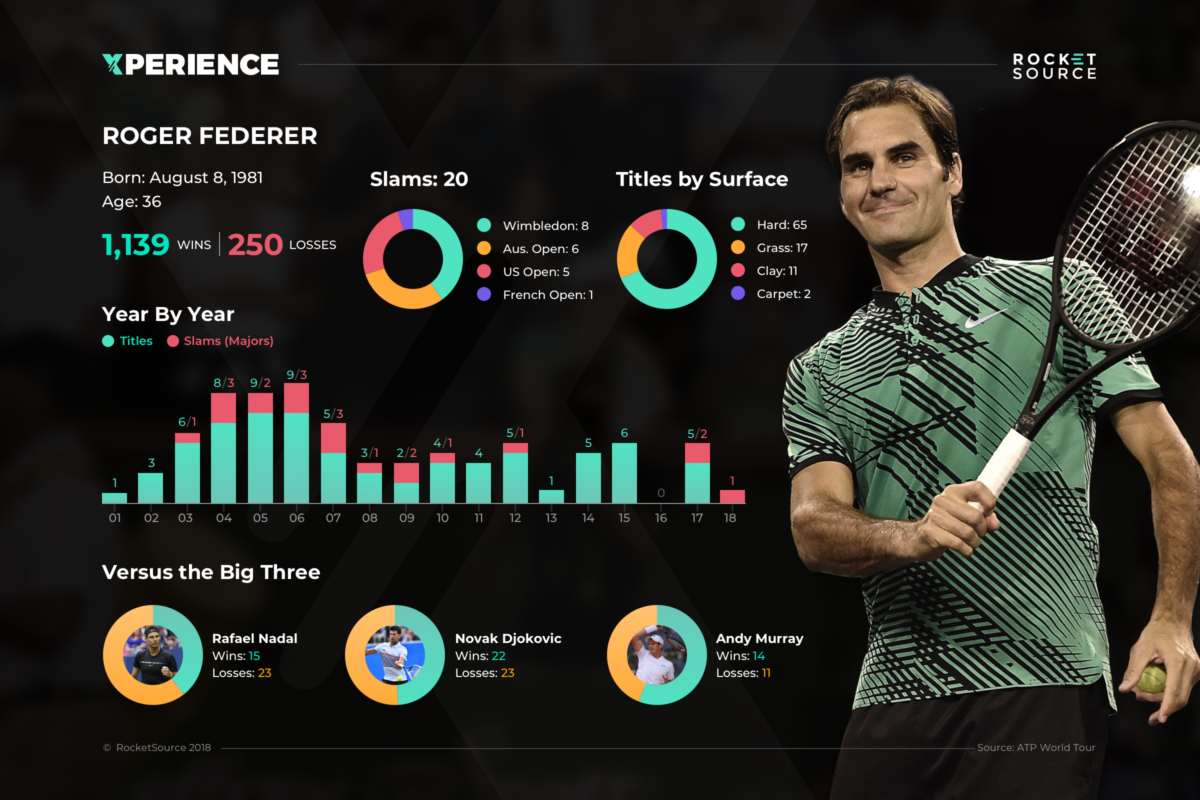
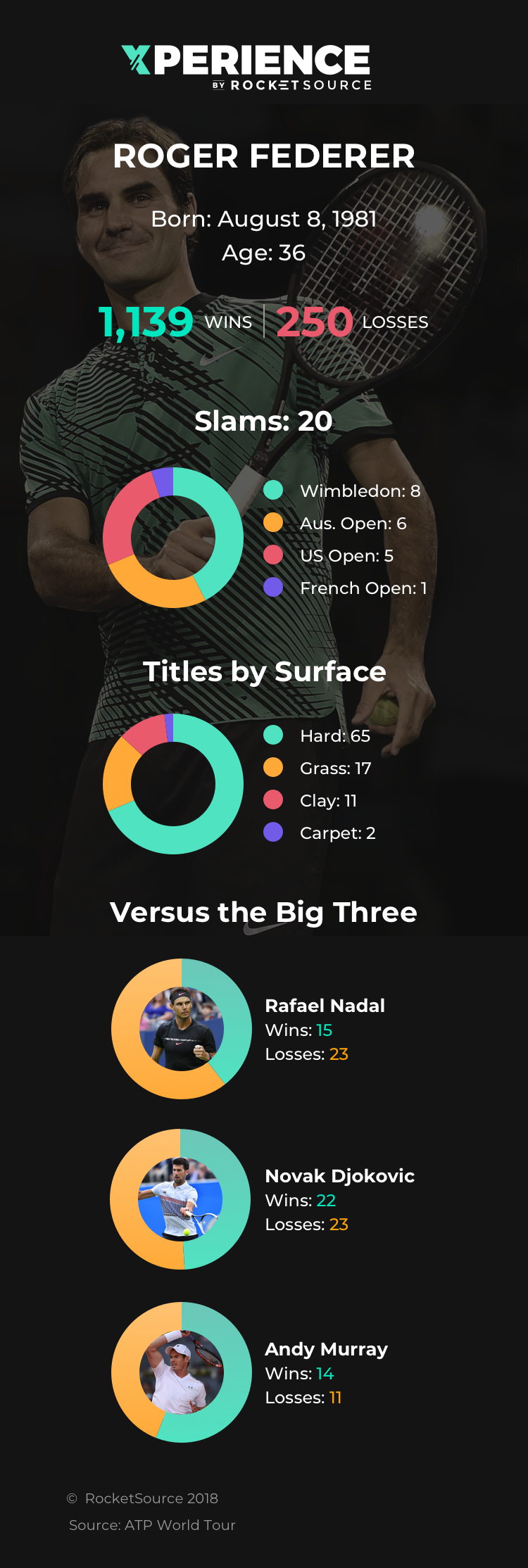
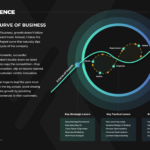


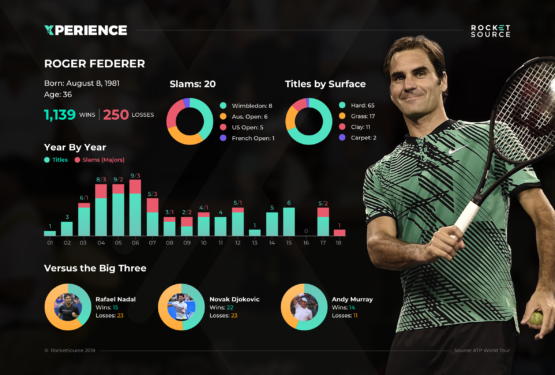
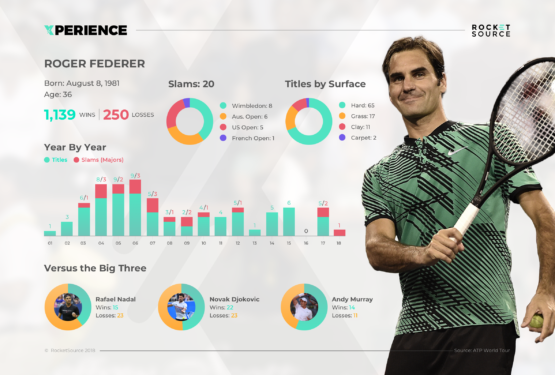
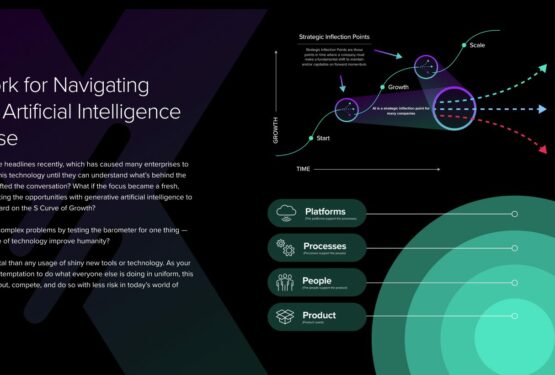
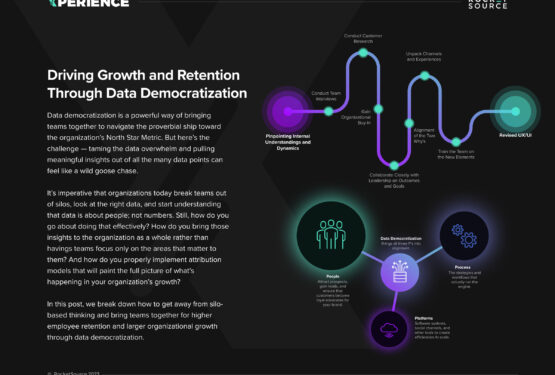
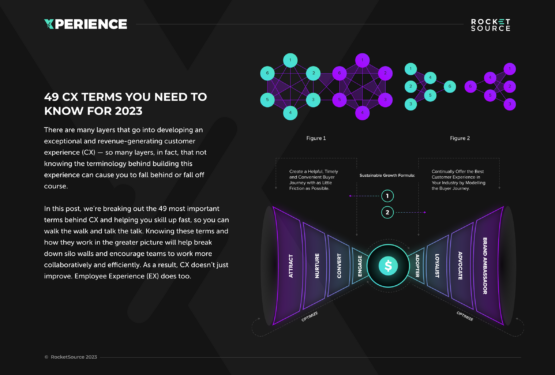
Businesses have a lot to learn from the trajectory of Roger Federer's career and his continued success on the tennis court.
Founder/Executive Chairman | RocketSource